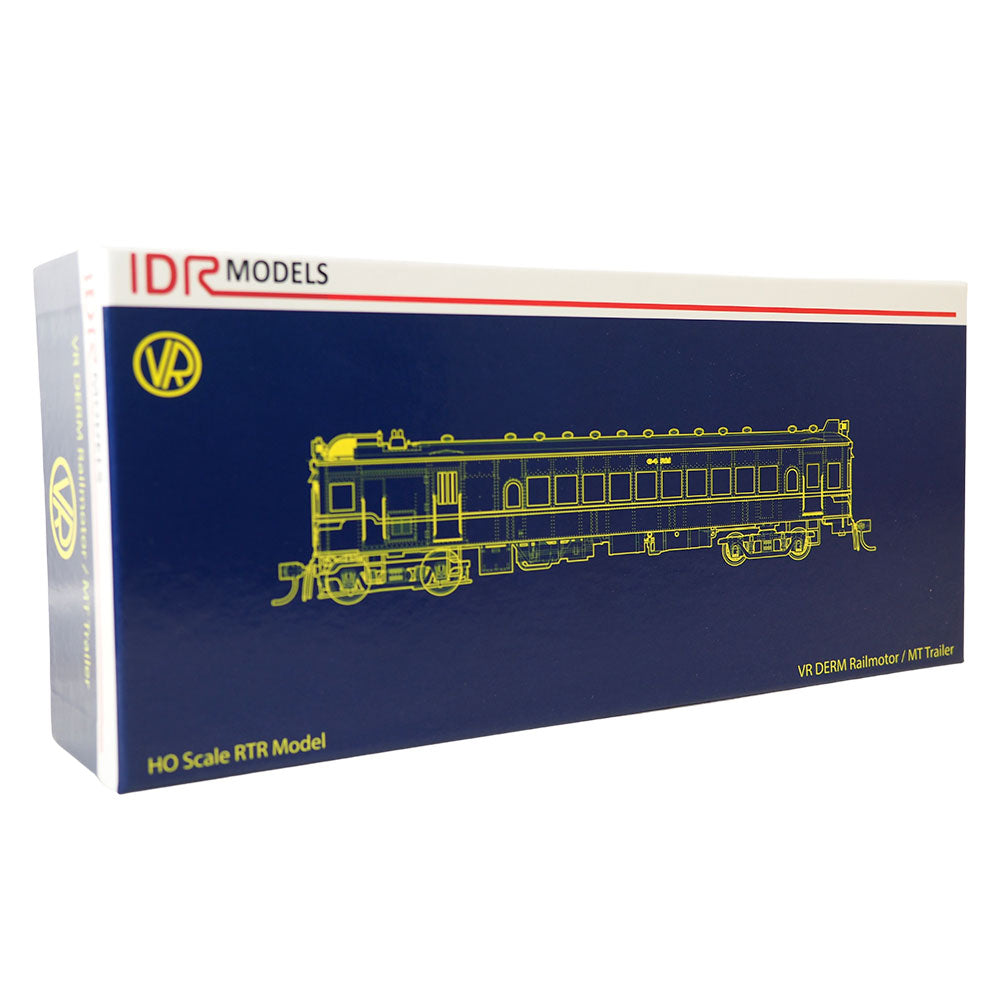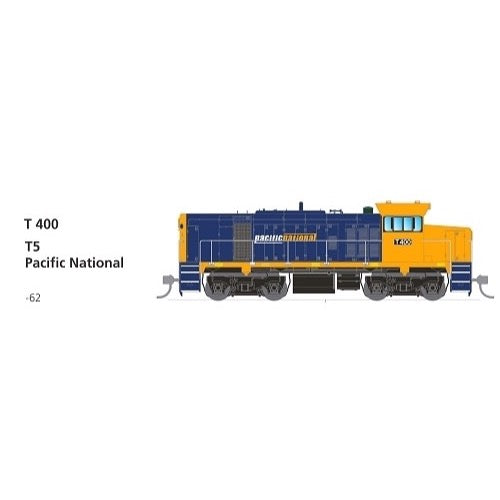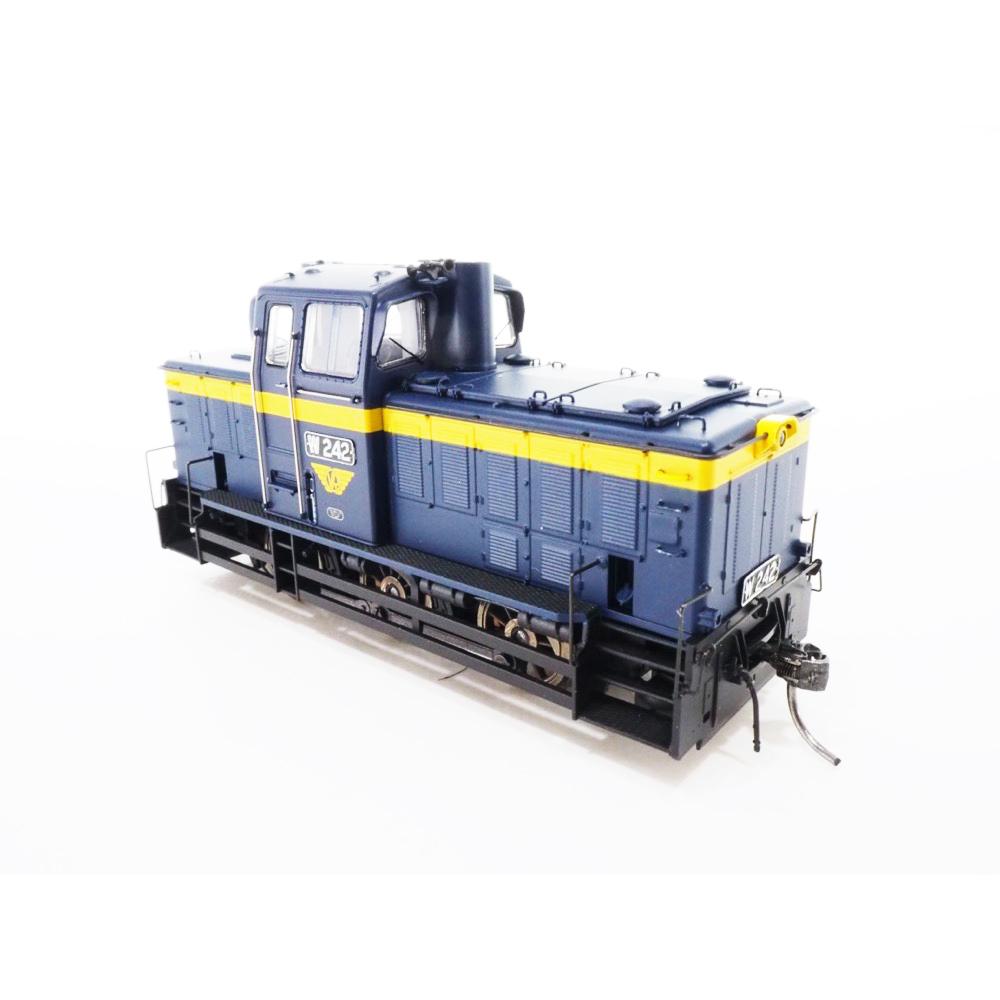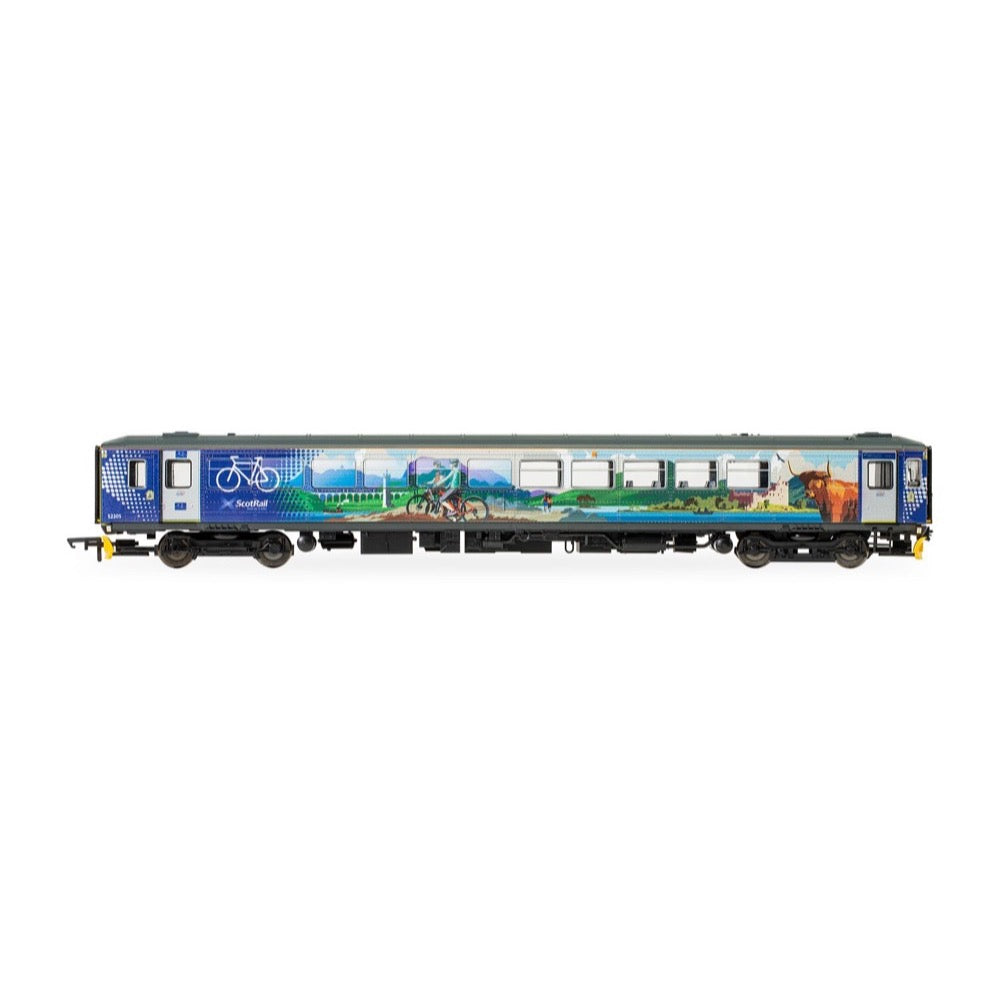
Hornby R30146 OO ScotRail Class 153 157305
Originally built as a two-car Class 155 ‘Super Sprinter’ by British Leyland between 1987 and 1988, using a construction technique similar to that used in the Pacers. Pre-formed panels were riveted together, creating a lightweight body on a welded floor assembly. Powered by a 285hp Cummins NT855-R5 Diesel, working through a Voith Hydraulic transmission, the maximum speed of a Class 153 is 75 mph, making it perfectly suited for small cross-country services
Specification
- Item Length - Without Packaging (cm): 31
- Item Height - Without Packaging (cm): 5
- Item Width - Without Packaging (cm): 3.5
- Item Weight - Without Packaging: 0.35
- Item Scale: 1:76 Scale 00 Gauge
- Finish: Painted
- Class: Class 153
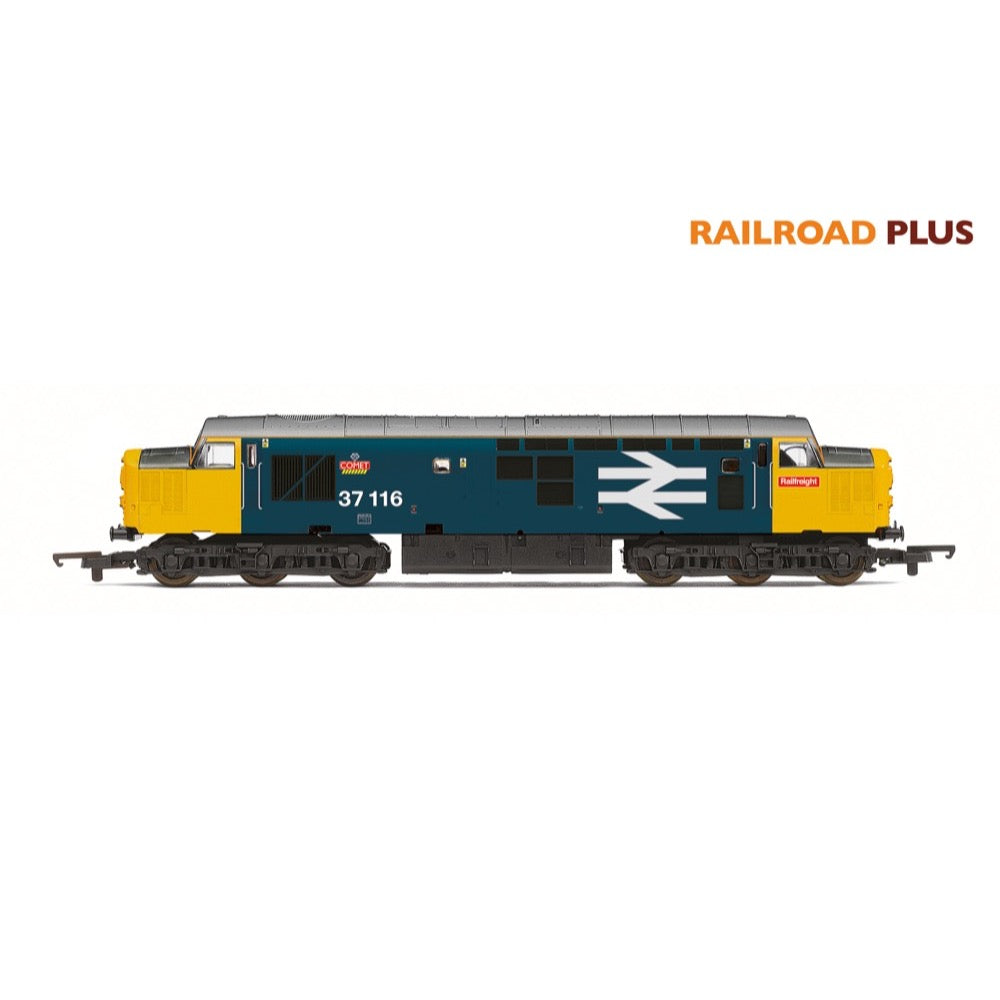
Hornby R30185 OO RailRoad Plus BR Class 37 Co-Co 37116 Comet
The British Rail Class 37 is a diesel-electric locomotive. Also known as the English Electric Type 3, the class was ordered as part of the British Rail modernisation plan.
They were numbered in two series, D6600–D6608 and D6700–D6999.The Class 37 became a familiar sight on many parts of the British Rail network, in particular forming the main motive power for InterCity services in East Anglia and within Scotland.
They also performed well on secondary and inter-regional services for many years. The Class 37s are known to some railway enthusiasts as 'tractors', a nickname due to the agricultural sound of the diesel engine of the locomotive.
Specification
- Item Length - Without Packaging (cm): 25.5
- Item Height - Without Packaging (cm): 5
- Item Width - Without Packaging (cm): 3.5
- Item Weight - Without Packaging: 0.23
- Item Scale: 1:76 Scale 00 Gauge
- Finish: Painted
- Colour: Blue
- DCC Status: DCC Ready 8 pin socket
- Operator: BR
- Designer: English Electric
- Livery: BR Large Arrow
- Minimum Curve (mm): Radius 2
- Motor: 5 Pole Skew wound
- Number of Parts: 1
- Class: Class 37
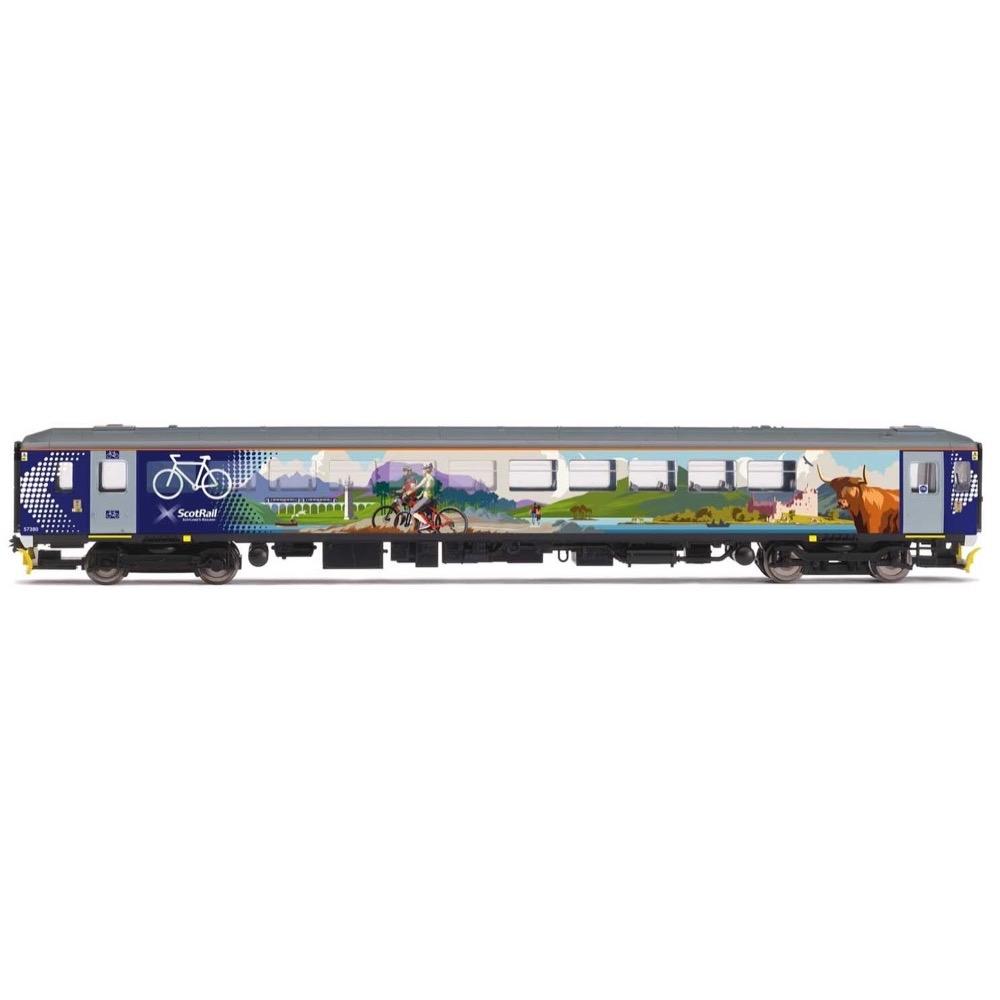
Hornby R30071 OO ScotRail Class 153 153380
The origins of the Class 153 date back to 1990, when British Rail needed replacements for its ageing fleet of Class 121 and 122 'Bubble Car' diesel railcars for use on the quiet Cornish, Welsh, North-Western, Norfolk and Lincolnshire branch lines, as well as augmenting rural two car units.
Originally built as a two-car Class 155 'Super Sprinter' by British Leyland between 1987 and 1988, using a construction technique similar to that used in the Pacers, pre-formed panels were riveted together, creating a lightweight body on a welded floor assembly. Introduction was rapid, but teething troubles with the door mechanisms soon emerged, consequently the fleet was taken out of use and modified, with the Class 156 units taking over the duties. The conversion to Class 153 was carried out by Hunslet-Barclay at Kilmarnock between 1991 and 1992, with 70 vehicles being produced. The layout of the original non-cab ends was different from the original cab end, so the ends are noticeably distinct with the vehicles not being symmetrical.
Powered by a 285hp Cummins NT855-R5 Diesel, working through a Voith Hydraulic transmission, the maximum speed of a Class 153 is 75 mph, making it perfectly suited for small cross-country services. They are fitted with standard BSI auto-couplers, allowing them to work in tandem with other multiple units from the 14X and 15X Classes fitted with the same coupler, as well as newer units like the Class 170. In 2019/2020, five former GWR 153s moved from Northern to Abellio ScotRail for use on the West Highland Line attached to Class 156s as 'active travel' carriages. These units have had their interiors heavily modified to carry up to 20 bicycles, along with large bags and sports equipment.
Specifications
- Item Length - Without Packaging (cm): 31
- Item Height - Without Packaging (cm): 5
- Item Width - Without Packaging (cm): 3.5
- Item Weight - Without Packaging: 0.35
- Item Scale: 1:76 Scale 00 Gauge
- License: Yes
- License line: The ScotRail trade marks are used with permission of the Scottish Ministers
- Finish: Painted
- Colour: Blue
- Gauge: OO
- DCC Status: DCC Ready 8 pin socket
- Operator: Scotrail
- Designer: Leyland Bus
- Livery: Scotrail
- Minimum Curve (mm): Radius 2
- Motor: 5 Pole Skew wound
- Number of Parts: 1
- Motor: 5 pole skew wound
- Class: Class 153
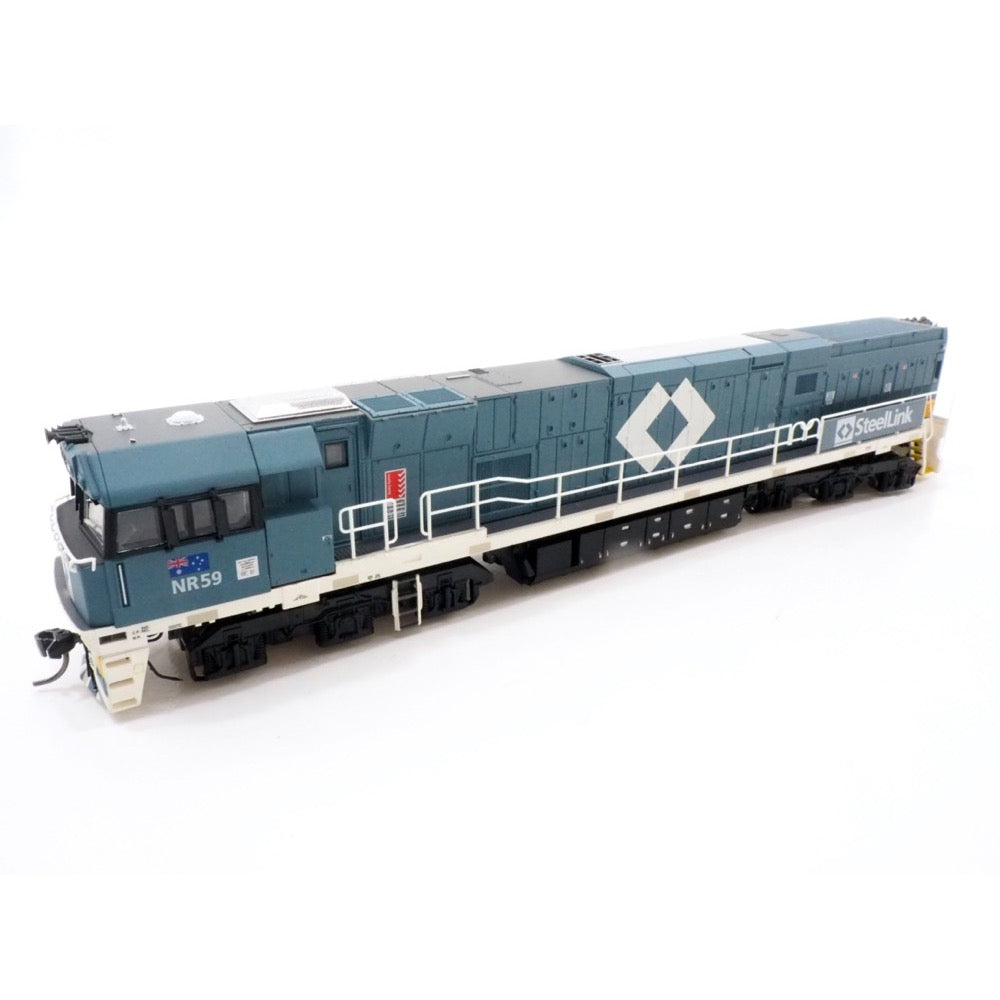
SDS Models HO NR59 Steellink National Rail NR Class Locomotive
Introduced in 1996 by National Rail Corporation these 120 units were built by A Goninan and Co. The locomotives are 3000kw General Electric powered and used on standard gauge Australia wide.
They were introduced in grey and marigold and several were painted into various business units of NRC. Later they wore GSR train liveries representing the Hook and Pull agreement between the two companies.
In 2002 Pacific National acquired the assets of NRC and commenced to repaint the NR class into their new blue and yellow colours.
The model features the current tooling from Austrains and includes operating headlights, marker and ditch lights and is Kadee equipped. These are an ideal way to add colour to your collection.
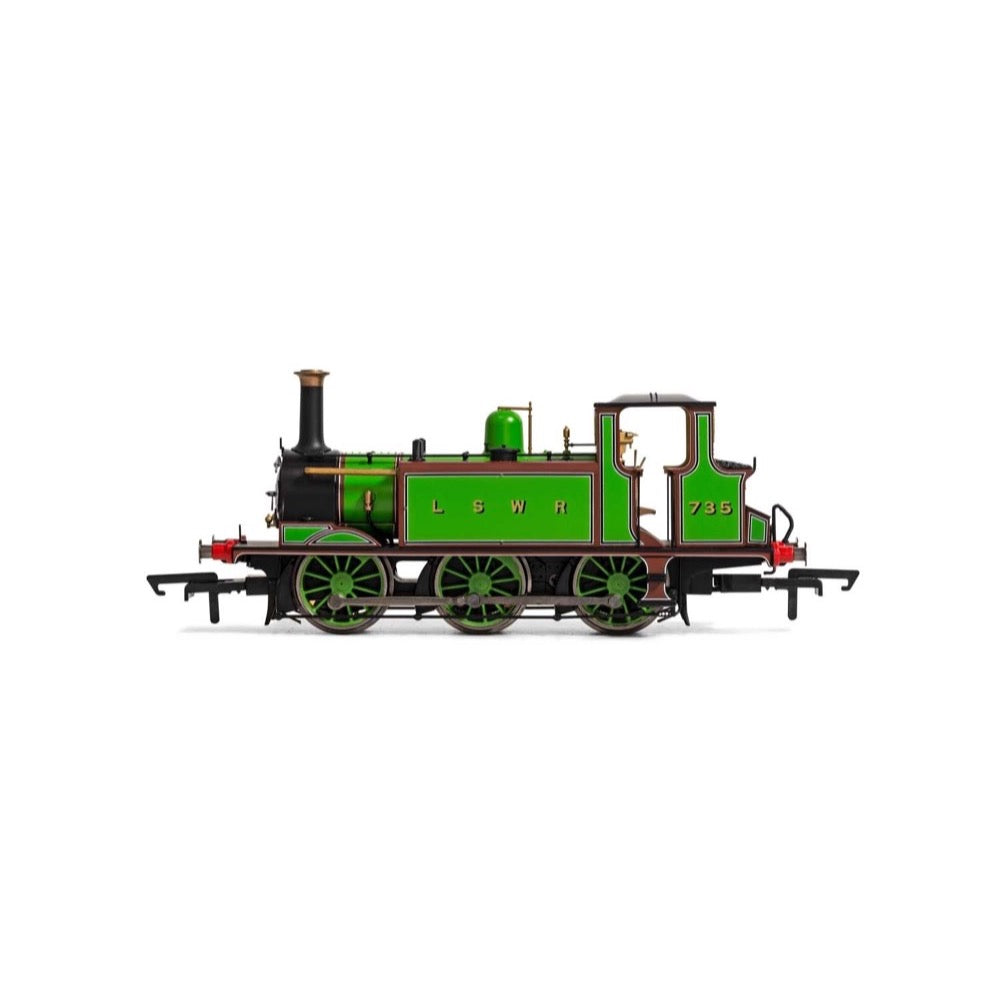
Hornby R3846 OO LSWR Terrier 0-6-0T 735 Locomotive
Entering service with the LB&SCR as No. 68 Clapham, the locomotive was sold to LSWR in March 1903 for use on the new Lyme Regis branch, receiving the number 735. Unfortunately, the Terrier was not suited to the sharply curved and steeply graded line and 735 was moved to light shunting and other branch line duties until late 1911, when the locomotive was reboilered. Re-entering traffic the following summer, minus condensing gear and exhaust steam pipes, 735 was engaged on the Chard branch until it was fitted with motor-train gear for use on the Lee-on-Solent Light Railway.
Specification
- Item Scale: 1:76 Scale 00 Gauge
- Gauge: OO
- Colour: Green
- DCC Status: DCC Ready 6 pin socket
- Operator: LSWR
- Designer: Edward Thompson
- Wheel Configuration: 0-6-0T
- Livery: Green
- Minimum Curve (mm): Radius 1
- Motor: 3 Pole Skew wound
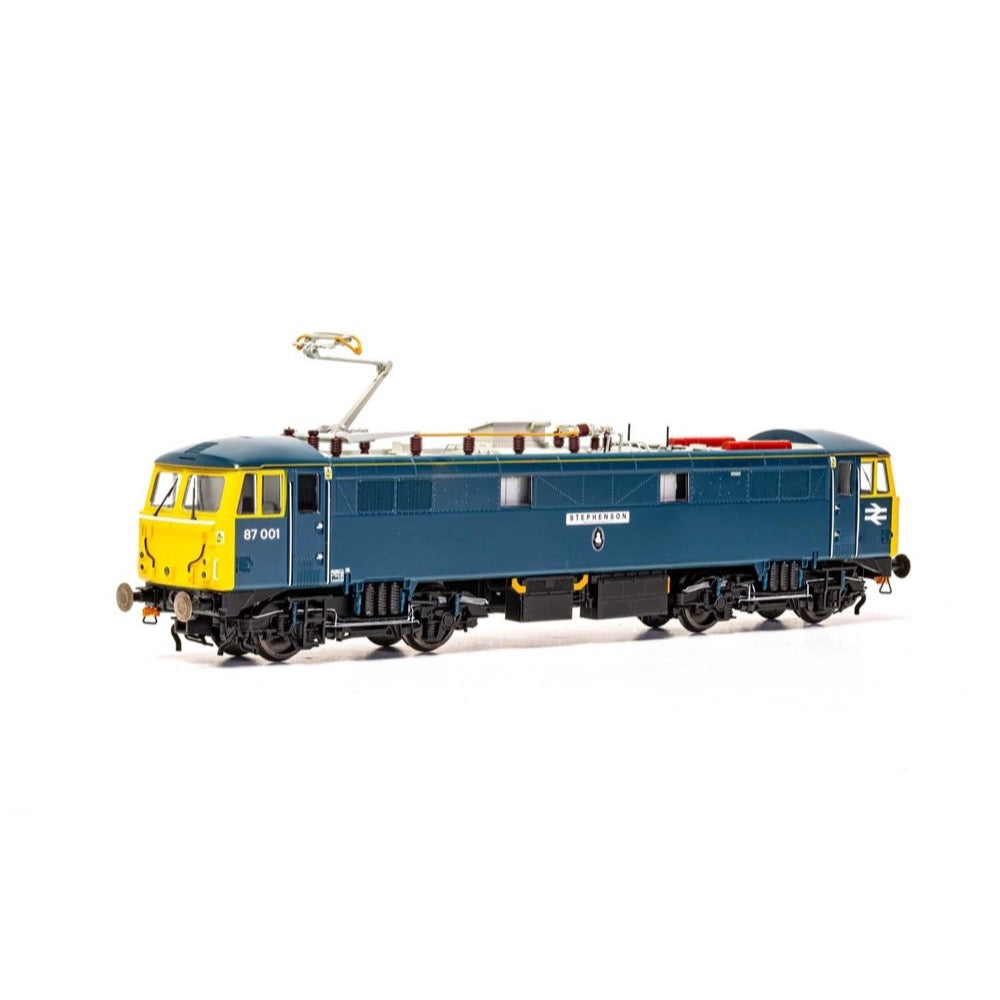
Hornby R3739 BR Class 87 Bo-Bo 87001 dual named Royal Scot and Stephenson - Era 11
BR Class 87 Bo-Bo number 87001 was built at Crewe, entering traffic on 29 June, 1973 allocated to Willesden depot. The Stephenson Locomotive Society persuaded British Rail to name 87001 as Stephenson to mark the 1975 celebrations of 150 years of railways in the United Kingdom and a naming ceremony was held on 14 January, 1976.
Produced under licence for SCMG Enterprises Ltd. ? SCMGE. Every purchase supports the museum.
Specifications
- Item Length – Without Packaging (cm) – 36.7
- Item Scale – 1:76 Scale 00 Gauge
- Finish – Painted
- Colour – Blue
- Gauge – OO
- DCC Status – DCC Ready 8 pin socket
- Operator – BR
- Designer – British Railways
- Livery – Rail Blue
- Minimum Curve (mm) – Radius 2
- Motor – 5 Pole Skew wound
- Number of Parts – 1
- Class – Class 87
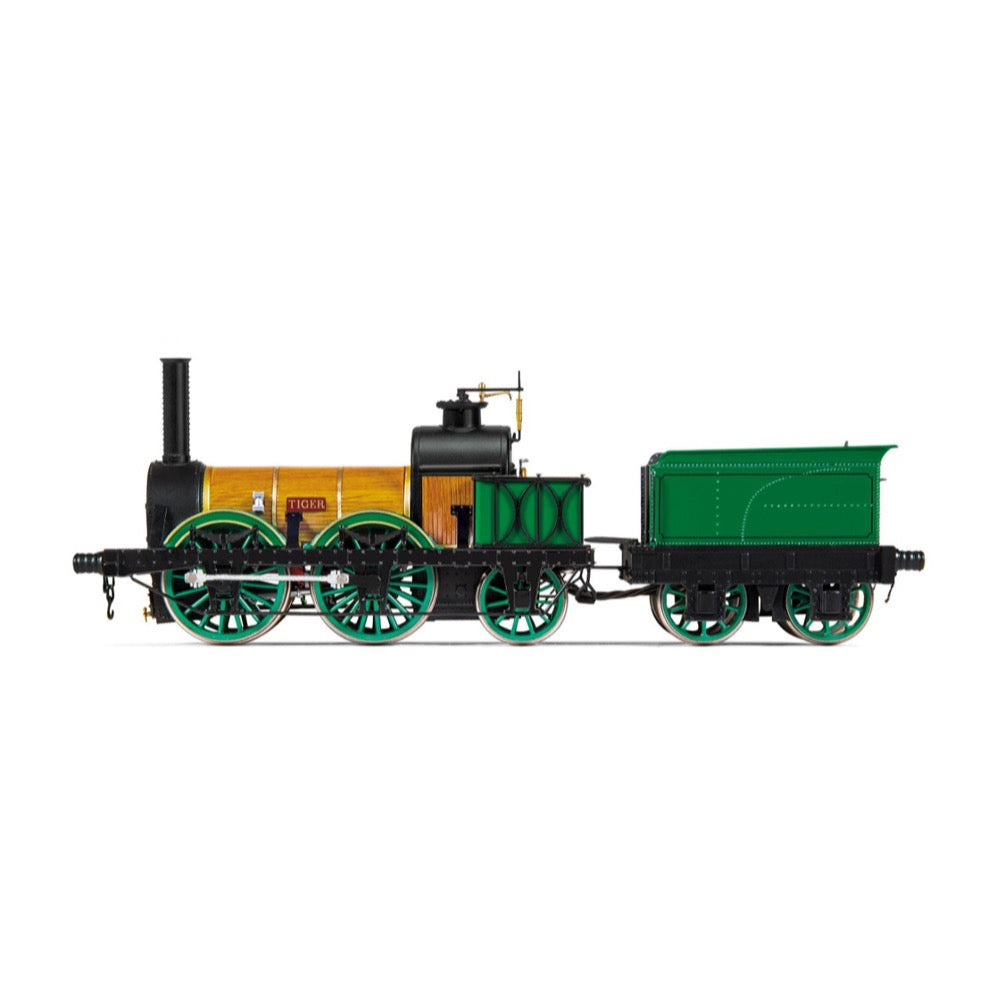
Hornby R30348 L&MR No. 58 Tiger 1804 - 1869 Locomotive
Number 58 'Tiger' was the sister engine to 'Lion', one of a plethora of locomotives named after animals as became the norm for the fledgling L&MR. Like its sister engine, 'Tiger' was designed as a luggage engine and was delivered from Todd, Kitson, and Laird alongside 'Lion', having been constructed at the same time as part of the same order. These were the first two locomotives to be built at the Railway Foundry in Leeds.
Information regarding 'Tiger' is scant, but as it was built to the same specifications, it is a reasonable assumption that the engine would have served the same duties as its more notable sister. It is also likely that the engine was also rebuilt at Edge Hill in 1841.
Likely still in service when the L&MR was absorbed into Grand Junction Railway and then the London and North Western Railway, 'Tiger' would have also been renumbered under its new operator. As it is not in preservation, it is assumed that at the time 'Lion' was withdrawn and converted into a stationary pump, 'Tiger' was also withdrawn and scrapped.
The solo ‘Tiger’ locomotive features a Next18 decoder socket for DCC operation with a pre-fitted speaker which allows this model to be enhanced on a digital layout. It also features a wood grain print to represent the wooden barrel-like body of the locomotive. More features include separately fitted brass details, a plethora of die-cast and etched parts as well as a stunning electroplated boiler. Crew figures are also included.
Specification
- Item Length - Without Packaging (cm): 20
- Item Height - Without Packaging (cm): 4
- Item Width - Without Packaging (cm): 3
- Item Weight - Without Packaging: 0.13
- Item Scale: 1:76 Scale 00 Gauge
- Finish: Painted
- Colour: Multiple
- Gauge: OO
- DCC Status: DCC Ready Next 18 pin socket
- Operator: L&MR
- Designer: Todd, Kitson and Laird
- Wheel Configuration: 0-4-2
- Livery: L&MR
- Minimum Curve (mm): Radius 2
- Motor: 3 Pole
- Number of Parts: 1
- Buffer Type: Moulded Dumb Buffers
- Coupling Type: Chains
- Hornby Decoder Compatibility Primary
- HM7000-N18TXS: Bluetooth® & DCC Sound Decoder (Next18-pin)
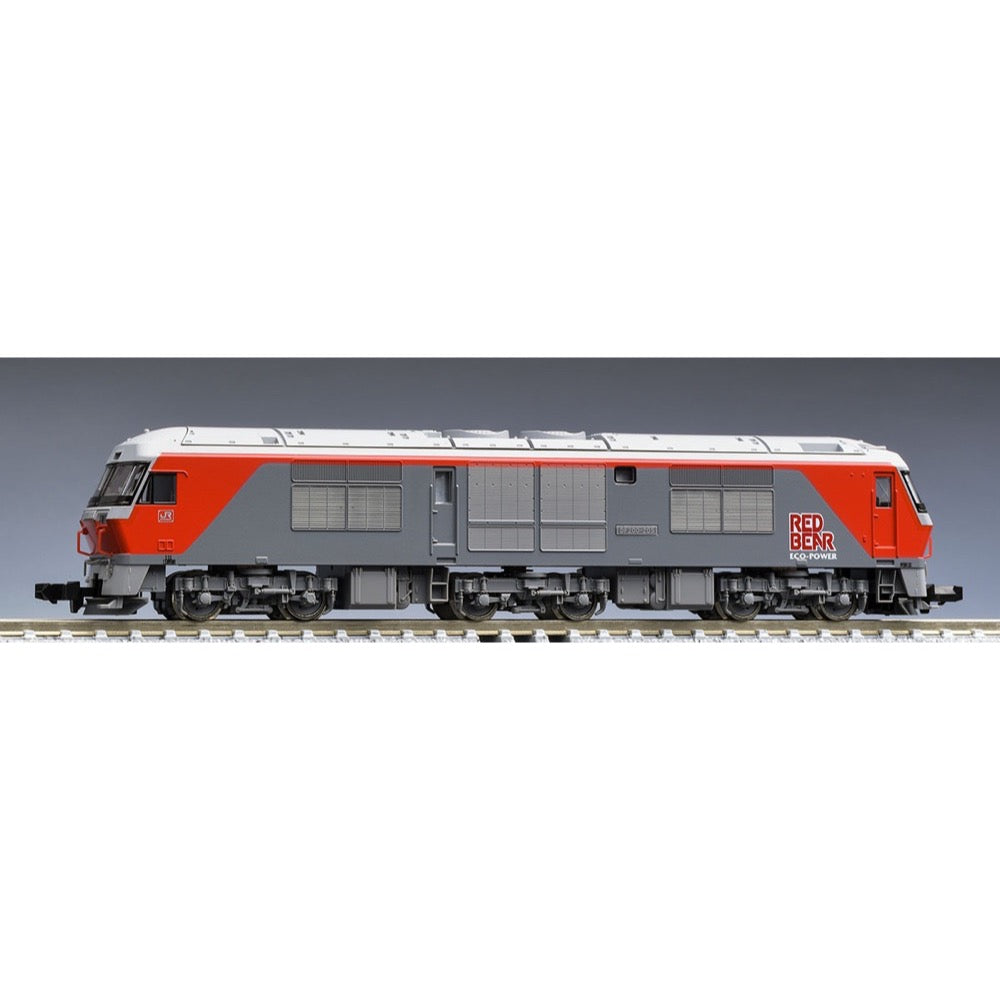
Tomix 2252 N DF200-200 Type Diesel Locomotive
The DF200 series is a diesel electric locomotive developed by JR Freight that was introduced in 1992.
Since its introduction, it has only been used in Hokkaido, but since 2016, some of the 100 series have been gradually transferred to the Aichi Locomotive Depot and converted to the 200 series at the same time.
After being transferred to the Aichi Locomotive Depot, it has been mainly used on the Kansai Main Line.
Features
- Reproduces the newly painted DF200-200 type
- Reproduces the underfloor equipment that was changed from the 100 series
- JR FREIGHT mark and "RED BEAR" logo are printed
- H-rubber is reproduced in black
- Whistle is included as a separate part
- Front handrail (vertical) is included as a separate part
- Release lever is already attached as a separate part
- Number plate is included as a separate part "DF200-205, 207, 216, 222"
- Self-coupled dummy coupler and TN coupler included
- Headlights are equipped with a constant lighting board
- Headlights are lit by incandescent color LEDs
- Uses power with flywheel
- Uses gray bogie frame and silver wheels
- Uses M-13 motor
Contents
Vehicle
- DF200-200 (new paint)
Accessories
- Runner parts: Front handrail
- Runner parts: Number plate (for front)
- Runner parts: Number plate (for side)
- Runner parts: Whistle
- Parts: TN coupler
- Parts: Dummy coupler
- Parts: Dummy coupler receiver
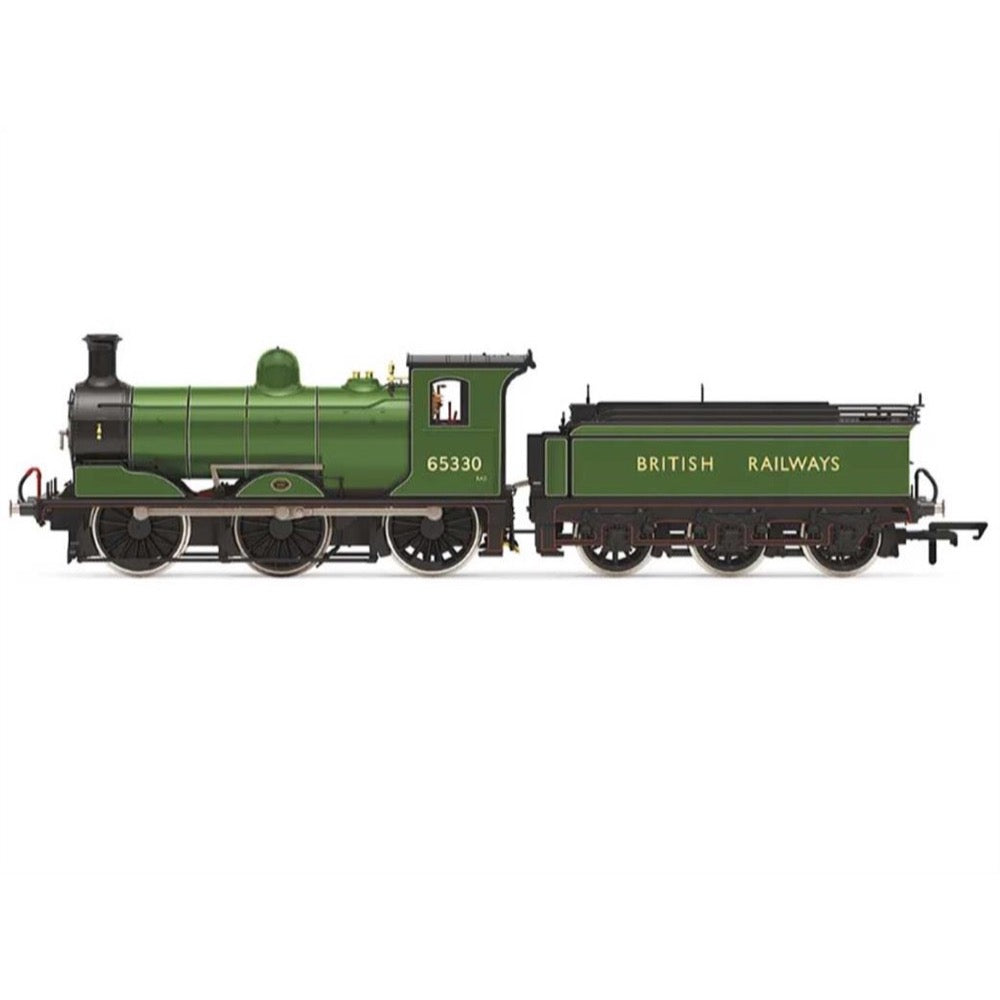
Hornby R3859 OO BR Class J36 0-6-0 65330 Limited Edition Era 4 Locomotive
The J36 Class, as it was christened by the LNER started out life as the Matthew Holmes designed C Class built for the North British Railway, North British in this case being a euphemism for Scotland. The locomotives were introduced in 1888 and would number 168 at their most populous, with 123 of them lasting into BR service.
Much of this BR service would be in their designed stomping ground of Scotland, where they would be the last steam locomotives in operation with the last two being withdrawn on the 5th June 1967 serving after even BR standard designs were withdrawn. Under BR the locomotives would receive the 2F power classification.
The locomotives would see many modifications fitted over their life time as you may expect for a locomotive that is effectively owned by three different companies. At various points in service these locomotives could be seen with different chimneys, cab windows, larger boilers, snowploughs and cab rears as well as a litany of liveries and names. 25 examples of the class were sent to France during the First World War and served with the Railway Operating Division.
A unique livery for the J36 was worn for a short while by 65330. This locomotive started life as 7778 built in 1900 by the NBR before being renumbered 9778, and 5330 by the LNER under their two numbering schemes. On entry to BR service it received the number 65330 and had its tender lettering removed and replaced with that of British Railways. Despite this, the locomotive retained its LNER Apple Green livery. This combination of LNER green and yellow BR lettering is a unique one that the locomotive would only wear for a short time.
This locomotive features a diecast boiler, strong 5 pole motor and NEM couplings front and rear. The locomotive also includes a large detail pack including a snowplough to accurately model how the locomotive may appear during the harshest of Scottish winters.
Specifications
- Item Length - Without Packaging (cm): 20
- Item Height - Without Packaging (cm): 5
- Item Width - Without Packaging (cm): 3.5
- Item Weight - Without Packaging: 0.38
- Item Scale: 1:76 Scale 00 Gauge
- Finish: Painted
- Colour: Green
- Gauge: OO
- DCC Status: DCC Ready 8 pin socket
- Operator: BR
- Designer: Matthew Holmes
- Wheel Configuration: 0-6-0
- Livery: BR Green
- Minimum Curve (mm): Radius 2
- Motor: 5 Pole Skew wound
- Number of Parts: 1
- Class: J36 Class
- Buffer Type: Sprung Metal Buffers
- Coupling Type: NEM Tension Lock


